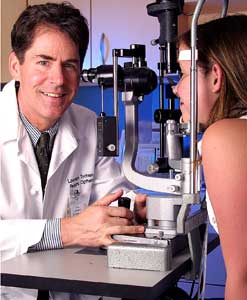 Margot Danker
Margot DankerCaf‚ Natasha
Rating: 4/5
3200 S. Grand Blvd.
St. Louis, MO 63118
(314) 771-3411
$7-20
Sometimes, while in search of one thing, you stumble upon something even better. This is precisely what happened to us one fateful Tuesday as we ventured down on Grand into SLU territory looking for a Vietnamese restaurant we had heard wonderful things about. When we arrived, the windows were dark and the place looked deserted. The restaurant happened to be closed on Tuesdays and, as we sadly shuffled our way back into the car, we decided to stop at the next place we passed.
There was a small Persian place called Caf‚ Natasha just down the street that looked good enough. Though one of us could remember hearing of it from a Persian friend, we did not have high expectations as we entered the door with our rumbling stomachs. We were hungry, and just needed somewhere to eat before heading back to campus.
As we sat down, still moping over the fact that the Vietnamese place was closed, we opened our menus and began to examine the multitude of authentic Persian dishes Caf‚ Natasha offered. Looking through the myriad appetizers, we decided to take a chance and try a few more esoteric dishes rather than the more typical hummus and baba ghanouj. When the Kashke-Bademjune arrived, a warm dip made up of pureed flame roasted eggplant with garlic, mint and spices topped with caramelized onions and olive oil, our moods instantly began to improve. The smooth, sweet dip was fantastic on the thin house pita and was unlike anything we had ever tried.
We also ordered colossal hot olives, which were marinated to perfection with a slight hint of spice.
Filling up on delicious eggplant and olives, we were feeling confident that the restaurant would not steer us wrong with our entrees. We decided to go all out with our Persian experience and ordered two very traditional dishes. Though it took awhile to arrive, the Kubideh Kabob came with two generous slices of grilled minced beef and lamb nestled next to perfectly cooked saffron rice and one of the best Greek-style salads we have ever had. The salad, a mixture of fresh romaine, cucumber, onion, tomato and Bulgarian feta was served with a tangy house-made yogurt dressing that was the perfect complement to the crunchy vegetables. The dressing was so good, in fact, that we decided to pour some of it over the meat and rice as well.
Fessenjoon stew, a pomegranate and walnut based dish with thick chunks of tender chicken, is a popular Persian specialty and was phenomenal at Caf‚ Natasha. The flavors of fresh pomegranate and walnut virtually sang through the sauce and the chicken was so tender it fell apart on the fork. We were disappointed, however, with the amount of chicken-the dish arrived with a scant seven or eight chunks of meat.
This was almost made up, though, by the rich base of the stew, which was soaked up beautifully by an ample supply of saffron basmati rice.
While we feasted on these specialties, content in knowing that we had stumbled upon a gem, our friends decided to try some of the more mainstream dishes.
In addition to their many traditional Persian stews and Kabobs, Caf‚ Natasha has a rather extensive sandwich menu. One friend decided to try their falafel sandwich, which came in a thin pita wrapped around warm patties of fried chickpea batter, tomatoes, lettuce and the delicious yogurt dressing. She was extremely impressed with the sandwich and declared that she would definitely go back again.
Our other friend went for the chicken kabob, which was house made minced chicken, roasted with spices and served with the same fixings as the falafel. She was equally impressed.
As we left, we were no longer sad that we hadn’t been able to go to the Vietnamese restaurant. Instead we were ecstatic that we had encountered such a fantastic Persian restaurant and we can’t wait to go back to try some of their other dishes. Though the service was a bit slow, the huge selection of meat and vegetarian dishes are sure to please even the more finicky eater, making it an ideal place for a leisurely weekend meal with a big group of friends.
Just be careful, if you go on a Wednesday it’ll be closed-but you can always go to the Vietnamese place across the street.
 Matt Rubin
Matt Rubin Lawerence Tychsen
Lawerence Tychsen Student Life Archives
Student Life Archives Student Life Archives
Student Life Archives